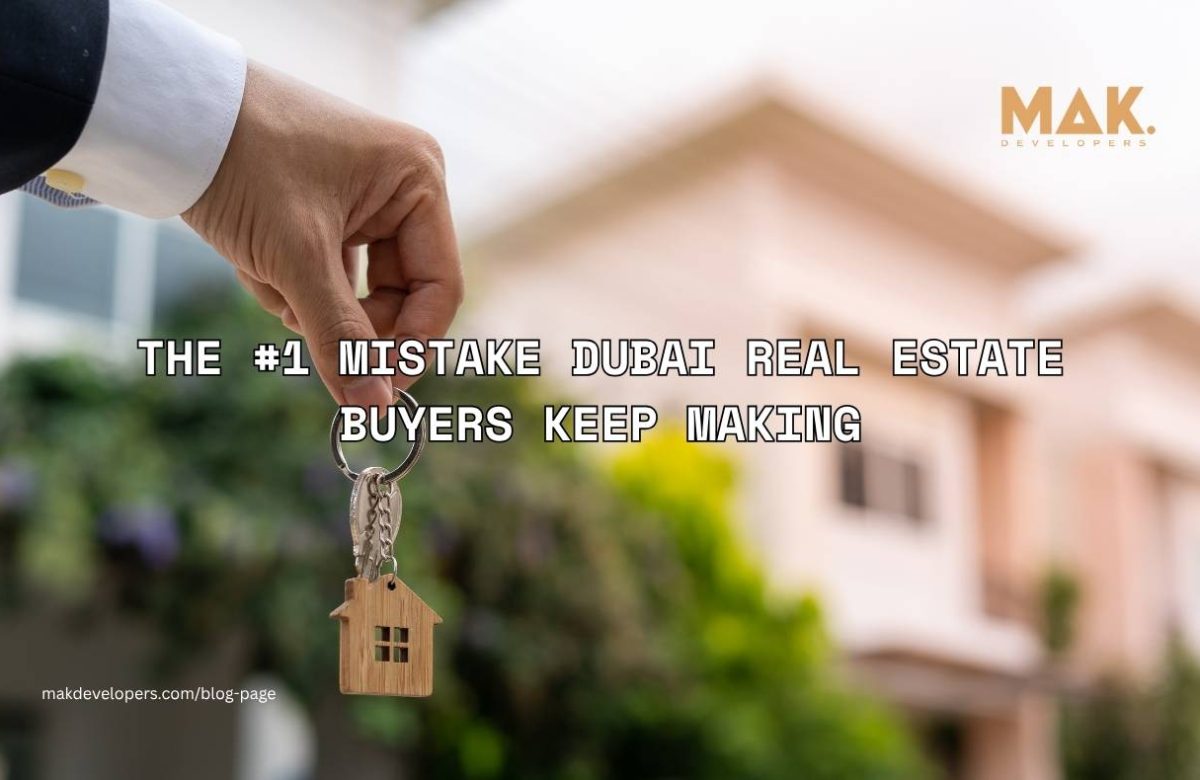The #1 Mistake Dubai Real Estate Buyers Keep Making
Did you know the one mistake Dubai real estate buyers keep repeating endlessly?
They believe popular areas guarantee the best returns and assume popular addresses deliver legendary profits. They chase the names everyone knows. Yet 2025 data tells a radically different story.
Business Bay yields just 5 to 6 percent annually. Downtown Dubai produces around 6 percent, and Dubai Marina hovers around 6.2 percent. These celebrated neighborhoods underwhelm investors year after year. Meanwhile, emerging opportunities deliver 7 to 11 percent consistently.
The gap widens. The opportunity grows. Yet most investors remain trapped in yesterday’s thinking.
Why Conventional Wisdom Fails?
The popular neighborhoods carry expensive price tags. That’s precisely where opportunity dies. High purchase prices compress rental yields. Premium valuations already reflect future growth. By the time everyone wants in, first-mover advantages disappear entirely.
Consider this carefully. When you pay maximum money for average returns to compete with countless other investors seeking identical assets. You wait indefinitely for appreciation that barely outpaces inflation.
This is the investor’s trap. Everyone falls into it eventually.
A property worth 10 million dirhams, gaining 39 percent, still yields only around 6 percent annually. The absolute numbers grow substantially. But the percentage return remains disappointingly modest.
Fortunately, a different path exists. A path fewer travelers recognize. A path where supply remains limited and demand accelerates silently. Where returns compound powerfully and savvy investors position themselves before the crowd arrives.
The Pattern Nobody Talks About
Every mature Dubai neighborhood followed the same trajectory. Early investors captured exceptional returns. They enjoyed strong yields from day one. Price appreciation compounded their wealth substantially. By the time mainstream attention arrived, most gains had already occurred.
The Dubai real estate buyers who entered when others hesitated prospered enormously. The investor who arrived after the headlines appeared merely participated. There’s a profound difference between those two positions.
Today’s emerging opportunities represent tomorrow’s popular addresses. The question isn’t whether they’ll appreciate. The question is whether you’ll participate in that appreciation.

The Opportunity Most Are Missing
Strategic positioning reveals the future before it arrives. Consider Saddlewood Park by MAK Developers in Nad Al Sheba 1.
Just 61 boutique apartments. Positioned steps from the Meydan Racecourse and merely 8 minutes from Downtown Dubai’s bustling energy. Set within a community experiencing extraordinary transformation.
Low supply. Premium positioning. Architectural sophistication. These elements alone attract savvy Dubai property buyers. But the real opportunity lies deeper.
The Infrastructure Revolution
Nad Al Sheba’s future unfolds according to a strategic blueprint. Three new metro lines will reshape mobility across the district. The Business Bay canal extension will introduce waterfront living experiences. A vibrant promenade will activate the community pulse. The nearby Etihad Rail terminal will connect regional commerce directly to your neighborhood.
These aren’t speculative promises. They are part of Dubai’s planned development agenda.
Saddlewood Park sits at the intersection of all these movements. It captures the upside and avoids the noise. It positions residents and smart investors at the epicenter of Dubai’s next chapter.
Why Low Supply Changes Everything?
Meydan’s neighborhood remains deliberately exclusive. Development here follows strict guidelines. Supply stays intentionally limited. This scarcity principle drives value relentlessly upward.
When demand increases, supply cannot respond instantly. Prices must adjust instead. Rental rates climb. Capital appreciation accelerates. Early investors capture exceptional returns. Late arrivals compete fiercely for diminished opportunities.
Saddlewood Park represents one of the few genuinely boutique offerings in this transformed geography. Sixty-one apartments. Not six hundred. This constraint protects investor returns fundamentally.
The First-Mover Advantage: Historical Proof
Dubai’s investment history proves one principle consistently. First movers win. Everyone else pays the premium.
The Marina’s early investors captured yields exceeding 12 percent in the early years. Today, Marina barely offers a 6 percent yield. Downtown’s pioneering residents secured returns that early investors could only dream about. Current Downtown buyers accept modest yields and delayed appreciation.
The pattern repeats relentlessly. Early entry means superior returns. Late entry means paying inflated prices for average results. This pattern doesn’t reverse. It accelerates instead.
Saddlewood Park operates within this proven framework. Early investors position themselves before the transformation becomes obvious. They capture strong returns and avoid overcrowded competition. Also they benefit from scarcity before supply expands.

Bigger Picture for Dubai Real Estate Buyers
The next wave of Dubai wealth creation happens in neighborhoods most haven’t discovered yet. Strategic Dubai real estate investments recognize this reality. They research emerging communities carefully. Also analyze infrastructure timelines meticulously and position themselves deliberately.
They don’t chase headlines instead they follow data, they don’t follow crowds instead they lead them.
Saddlewood Park represents exactly this investment thesis. The question isn’t whether this opportunity will prove valuable. History guarantees it will.
The question is whether you’ll participate while prices remain accessible. Once these 61 boutique apartments are sold out, that window closes permanently.
The Moment Demands Your Attention
Dubai’s real estate market operates according to precise cycles. Informed investors recognize these cycles. They act decisively when opportunity aligns with timing.
That moment is arriving. That alignment is forming. That window remains open but narrows by the day. Choose your position wisely.
Frequently Asked Questions (FAQs)
Q1: Should I avoid Downtown and Marina entirely?
No. These areas offer lifestyle benefits and appreciation potential. But acknowledge lower rental yields and higher entry prices. Ensure your investment strategy aligns with these realities. Some investors prioritize prestige over yield. That choice remains valid if you understand the trade-off.
Q2: Will affordable neighborhoods eventually become as expensive as Marina?
That may take time. By then, you’ll have captured years of strong rental yields. Your capital will have appreciated substantially. You’ll have built significant wealth through monthly income. That advantage compounds powerfully over time.
Q3: Is buying in emerging areas risky?
All real estate involves risk. But data shows emerging neighborhoods with strong rental demand, good infrastructure, and consistent appreciation present reasonable risk-reward profiles. Research individual communities thoroughly before investing.
Q4: How quickly can I expect returns on a Dubai property?
This depends on your strategy. Rental yields begin immediately upon securing a tenant. Capital appreciation typically develops gradually over 3 to 5 years. Most successful investors combine both approaches for balanced returns.
Q5: Why should I consider Nad Al Sheba 1 when established areas seem safer?
Established areas command premium prices but deliver modest returns. Emerging communities with strong infrastructure planning offer superior yield potential and appreciation opportunities. The infrastructure coming to Nad Al Sheba 1 transforms it from emerging to essential. Early positioning captures this transformation.
Q6: What makes low supply so important for investor returns?
When demand increases but supply remains fixed, prices must adjust upward. Saddlewood Park’s 61-apartment limitation means investors benefit from scarcity-driven appreciation. Larger developments cannot capture this same value acceleration.
Q7: How do I evaluate emerging communities compared to established ones?
Focus on fundamentals. Analyze infrastructure timelines. Study supply constraints. Compare yield potential. Research developer reputation. Data-driven analysis reveals opportunities headlines miss.

